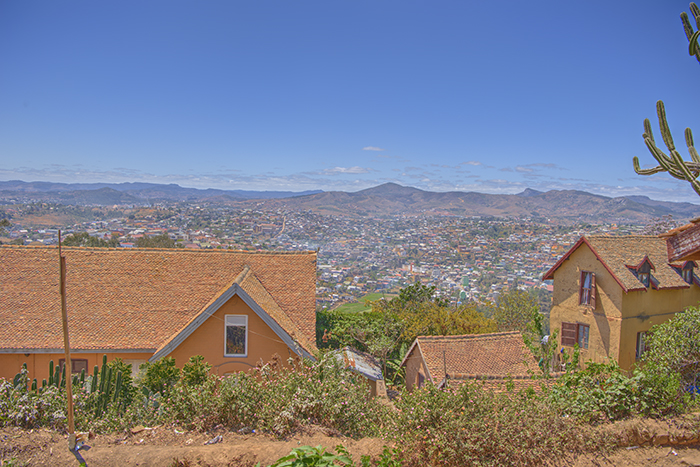
photo 121
Fianarantsoa itself is a quaint town that has mostly remained true to its 1800's roots. The roofs of the churches are covered with red tiles but many are in disrepair. The town was placed on the World Monuments Fund in 2008 to assist in attracting money to repair these old buildings. Here is a view of the town with one of the prominent churches in the foreground that has repaired tiles:

photo 121
The town has a very large mostly covered marketplace where you can buy anything you might need.
Here are herbs and roots:
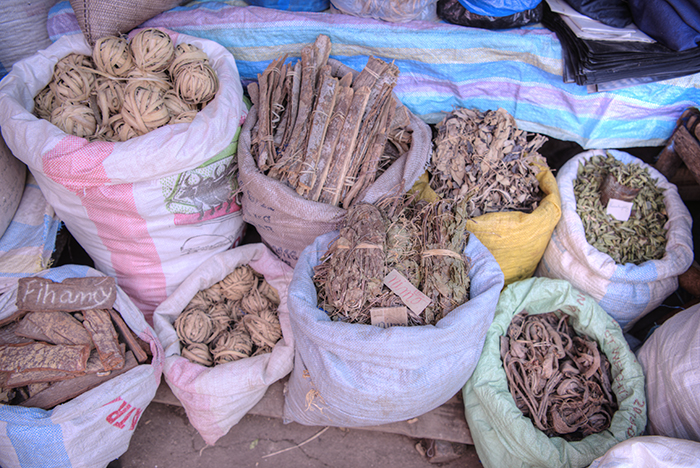
photo 122
Whenever we saw someone sewing, the machine was always a hand-turned model. We did not see a pedal operated sewing machine or an electric one anywhere. Here is a woman sewing:
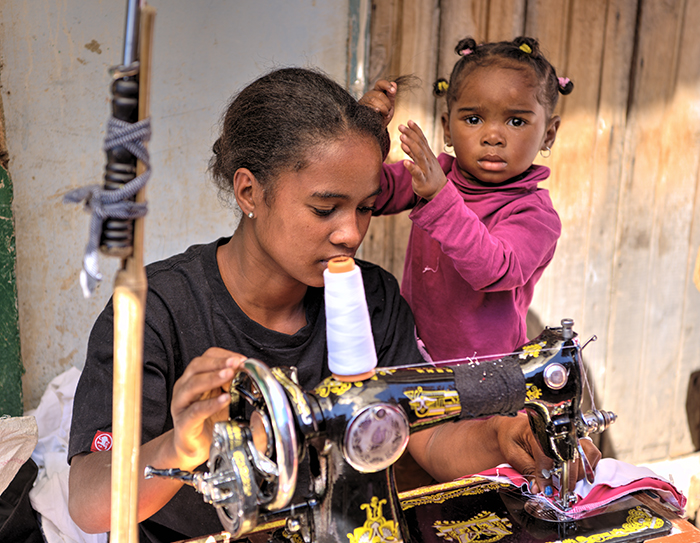
photo 123
The drive between Fianarantsoa and Ambalavao is through beautiful land of rice paddies, and small towns. The farmers do well for themselves compared to people who live in the cities where there is high unemployment. Relatively recently, Madagascar received assistance from Israel to improve their agricultural system. Terraced crops were planted to maximize their production and require less water. We did not see terraces in other parts of Madagascar that we visited.
Expertly terraced crops and rice paddies along the way:
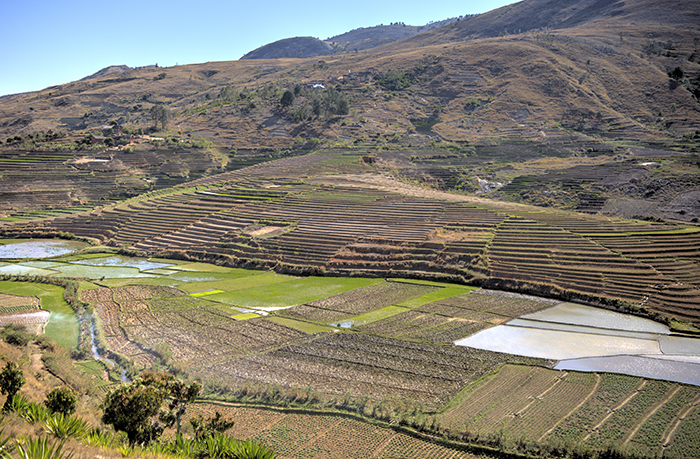
photo 124
More rice paddies showing clean, precision work:
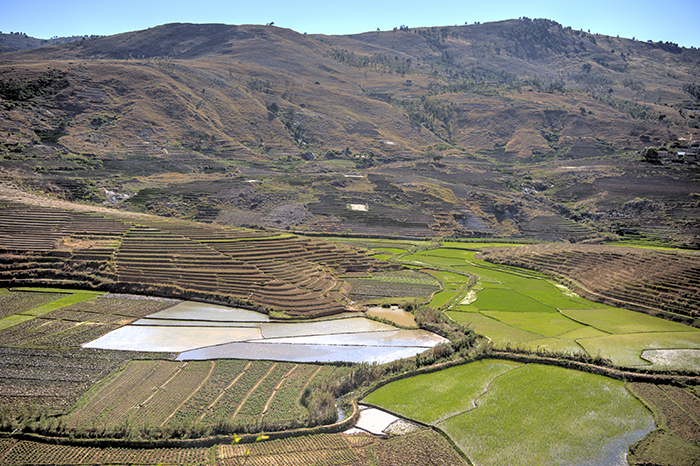
photo 125
More rice paddies:
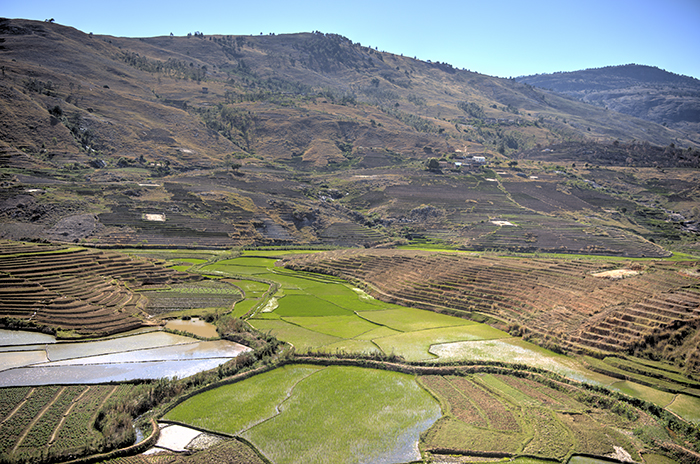
photo 126
and more:
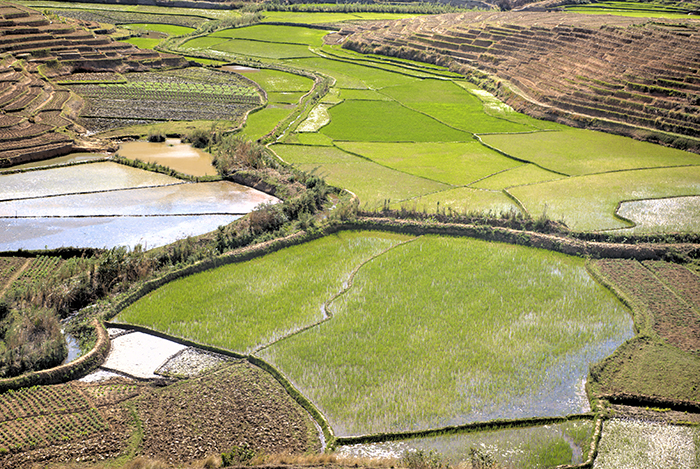
photo 127
This small town is home to two very unique cottage industries. One is hand-made paper called Antaimoro. It is made by cooking a particular bush in chemicals to turn it into pulp. Then the pulp is spread in a thin layer over a silk screen. Real flower petals are placed onto the pulp in an artistic pattern. Then the large panels are left to dry in the sun. This paper making was introduced by Arab settlers in the 8th century.
We visited the paper factory and here is a small portion of a panel of the hand-made paper while it is still wet:
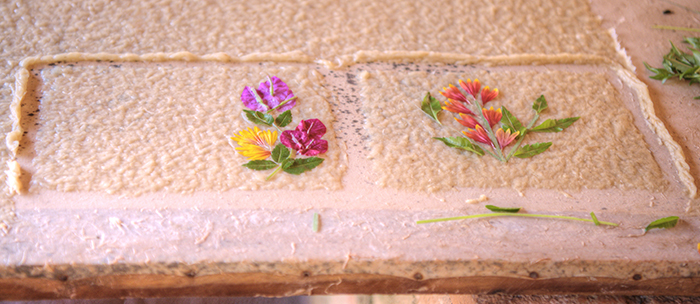
photo 128
The other cottage industry found here is hand-made silk cloth. The particular silkworms grow in the forest nearby. They are harvested and the silk thread is removed by hand. It is dyed with colors from natural herbs or minerals, and then wound into balls so it can be used for weaving.
Here is a woman showing off the finished shawls:
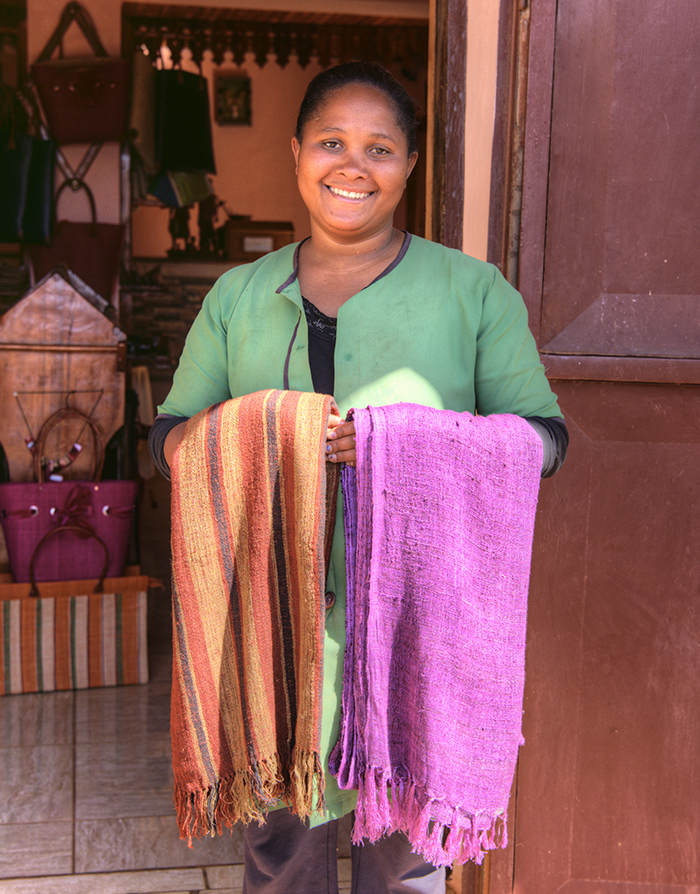
photo 129
Gontinue to Madagascar Anja Reserve page
or go back to the South Africa and Madagascar contents page
© 2017 Jeffrey Pawlan